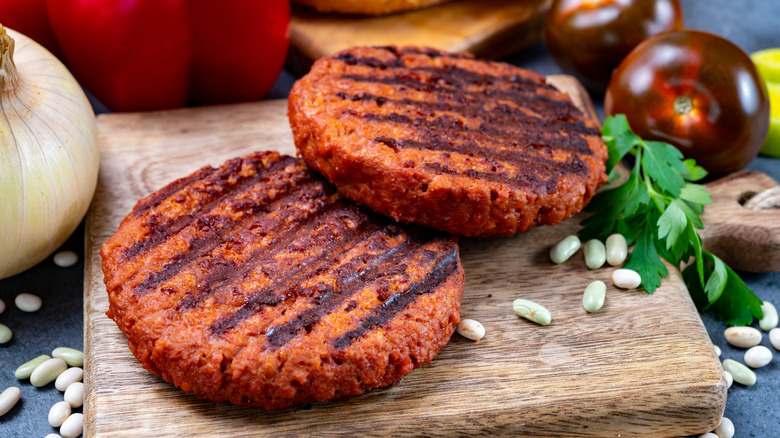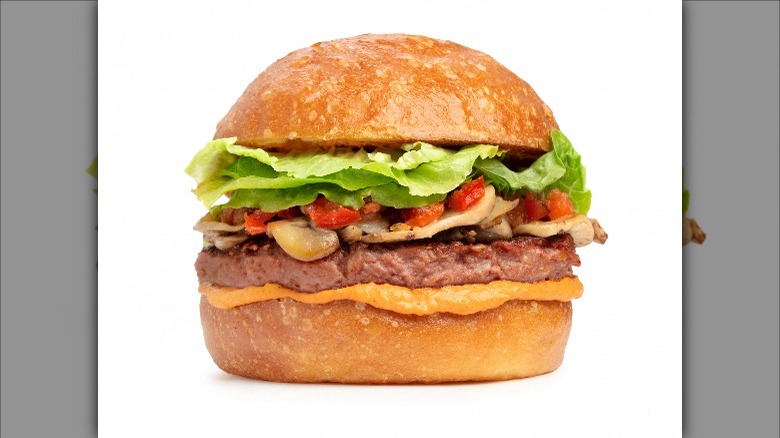Texture Is Key When Using TVP To Make Vegan Burgers
Whether you're a committed vegan or just looking to mix up your diet, veggie burgers are a great way to achieve maximum flavor with less saturated fat and sodium than conventional burgers — ultimately, according to UC Davis Health, incurring fewer risks to one's health. But as anyone who has eaten a veggie burger before can tell you, texture often gets shunted to the back of the line of priorities. And it's a shame because the surface of the patty makes or breaks the burger.
TVP is a fantastic meat substitute when it comes to burgers. It stands for Textured Vegetable Protein, and it was first created in the 1960s. It's essentially soy flour and water cooked into little chunks that resemble ground beef, and it's a popular meat substitute for vegetarians, vegans, and people eating on a budget. What you want in a veggie burger patty is something that won't fall apart, giving you the chewy texture of a beef patty, but can also develop a crust with a nice crunch to it. If you take the TVP you buy at the store, you'll have a hard time getting it to stick together to form the patty right off the bat. But with a bit of creativity, we can fix that problem.
How to make a TVP burger patty
TVP is a dehydrated product, meaning it will need to be rehydrated before being used in a recipe. So, start by soaking it in a hot broth or water for about ten minutes. The next part really depends on what recipe you're using and what you'll be adding to the TVP to make the patty.Whether your recipe calls for carrot baby food and panko bread crumbs or black beans and tomato paste, you will add all your ingredients into a food processor and blend them. After you've blended those, you'll add the TVP and pulse a couple of times.
And it's vital to pulse rather than blend. The final product's texture comes from the TVP, and if you blend it too finely, it will turn into a paste. You should have a chunky, meaty texture after you've pulsed it all together, which can be mixed together with a large spoon. Pulsing ensures it's fine enough to achieve adhesion but textural enough to give a mouthfeel akin to the satisfying bite of real ground chuck.

